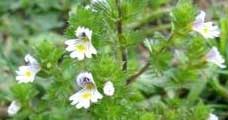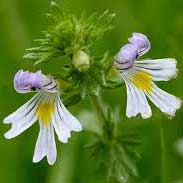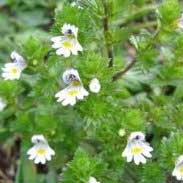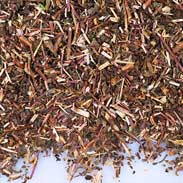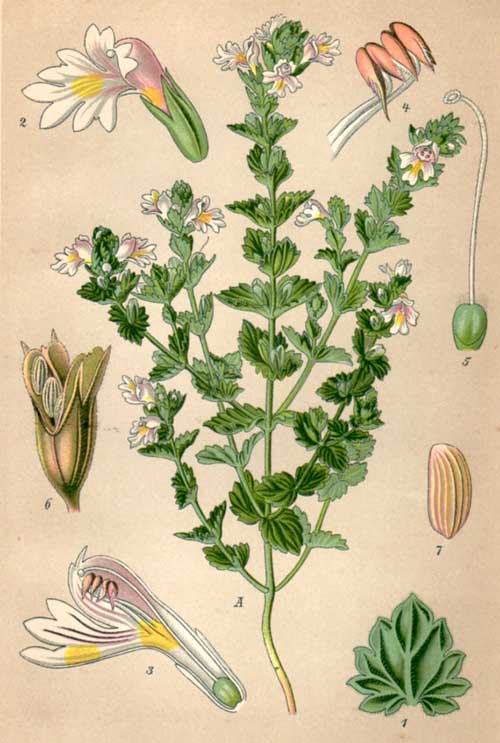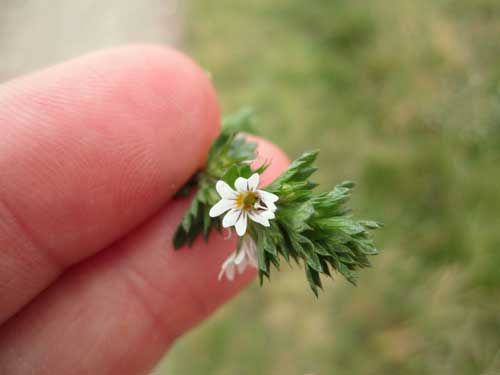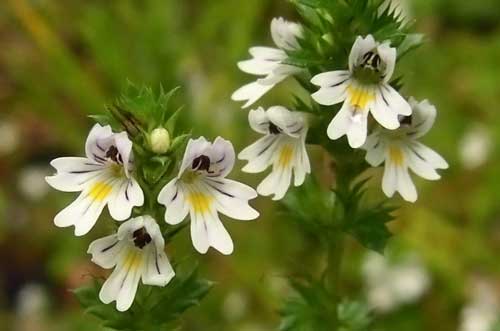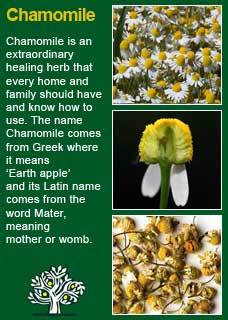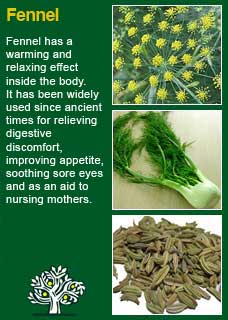
|
|
||||
| Our Pages ABOUT CONSTITUTIONAL MEDICINE
|
In herbal medicine, we use the aerial parts of Eyebright; a short lived herb that can reach up to about 30 cm in height. Its leaves have jagged toothy edges and its flowers also vary between white, red or yellow, they usually have a yellow spot in the throat.
From how it earned its name Eyebright has, of course, chiefly been used to assist with ailments of the eyes; conjunctivitis, red-eye, styes, itchy eyes, stinging eyes and weak vision from diverse causes. Eyebright had the folklore reputation to be able to restore sight to people after their 'three score and 10' (70 years of age). Whilst this probably sounds like a complete exaggeration it should be considered that many such ageing people may have had degenerative changes to the structure of their eyes that could have been considerably improved with the regular use of Eyebright. The famous poet Milton wrote The much loved 18th century poet Shenstone wrote Eyebright was used by the Scottish Highlanders in a lotion mixed with milk and applied to the eyes with a feather and in Iceland the expressed juice was used to treat a variety of eye complaints. T Bartram describes its actions as anti-inflammatory (in an eye-lotion), antihistamine, anti-catarrhal and astringent. Bartram writes that 'many causes of eye troubles in later life date from measles in childhood and advises an Eyebright lotion during measles to prevent eye troubles'. He says it 'has special reference to the eyes, nose and throat and is good for conjunctivitis, red eye, styes, poor visual acuity due to eyestrain or diabetes, itching or stinging eyes'. He recommends it as a gargle for 'relaxed tonsils and sore throats' and as a wash for blepharitis, watery catarrh, hay fever, chronic sneezing and inflammed nasal mucosa' as a wash. Chevallier writes 'its ability to counter mucus means that it is often used for infectious and allergic conditions affecting the eyes, middle ear, sinuses and nasal passages. Eyebright counters liquid mucus but it should be used guardedly for dry and stuffy congestion, which tends to be made worse by the plant's astringency' To counterbalance this however, T J. Lyle writes, In cases of congestions and inflammations of the eyes, especially of any torpid grade, it is valuable as an eye-wash. It is an astringent but is not drying and hence is more toning to the membrane. Euphrasia will be found very useful for the relief of acute inflammation of the eye and for opacity of the cornea and when there is an acrid secretion of either eyes or nose with heat and pain. H Felter writes of Eyebright that it is 'an admirable remedy for acute catarrhal inflammations of the nasal and ocular membranes, with profuse, watery secretion or abundant flow of acrid mucus, and attended with heat, pain, burning, and sneezing. It is one of the most certain agents in acute coryza and in mucous ophthalmia, with abundant lacrimation. It is equally effective when acute catarrhs extend to the ears through the Eustachian passages, and are attended by earache, headache, sneezing, and coughing. Euphrasia is useful both to prevent and to relieve, in the early stages, acute frontal sinusitis. During or following measles it controls the distressing catarrhal symptoms. In all disorders its most direct indication is profuse watery discharge with acute inflammation or irritation'
~ Anthroposophical general practitioners and ophthalmologists in Germany and Switzerland participated in a study where patients were prescribed one drop 1-5 times daily for 3-17 days of Eyebright eye-drops. Efficacy measures included assessment of the occurrence of redness, swelling, secretion, burning, and foreign body sensation. Tolerability measures included conjunctival redness or burning, veiled vision and foreign body sensation; data from 65 patients were evaluated. Results indicated that 81.5% experienced a "complete recovery." Only 1 patient experienced slight worsening of symptoms. A majority of patients (86%) evaluated the efficacy of eyebright as good to very good. These results were comparable to the physician assessment. A greater majority of patients, by self-report (94%) and physician assessment (97%), described tolerability as "good" to "very good." (Stoss, M., Michels, C., Peter, E., Beutke, R., and Gorter, R. W. Prospective cohort trial of Euphrasia single-dose eye drops in conjunctivitis. J Altern.Complement Med 2000;6(6):499-508) ~ Eyebright contains constituents called iridoid glycosides including one particular substance called aucubin. Aucubin demonstrated anti-inflammatory effects on tissue swelling when given orally or applied topically (Recio M, Giner RM, Manez ML, Fernandez B et al. Planta Med 1994; 60: 512-515) ~ Aucubin (or more precisely a metabolite of aucubin called aucubigenin) showed significant antiviral activity against the hepatitis B virus as well as notable antibacterial and antifungal effects in laboratory studies (Batholomaeus A, Ahokas J. Toxicol Lett 1995; 80:75-83) ~ The authors, titles and the 'where-and-when' published of about 20 further studies and articles on Eyebright are listed in a PDF found here
For some years now, against this proven and safe way of herbalism, there has been a rising tide of excessive caution and scare-mongering in many parts of the world. The same authorities that, not so long ago, decried herbal medicines as ineffectual, have now taken up a different adversarial position; that they are dangerous substances that should only be prescribed by Doctors, who of course have zero training in them. Unfortunately, the same unnecessary fear and worry has crept into many natural health websites and popular publications on herbs. Herbs that we have safely used for thousands of years, that have no reports of adverse reactions in the medical literature despite widespread use by millions of people, are suddenly described as contraindicated because of something that should have been seen as completely unimportant, or at the utmost a merely theoretical concern, such as a laboratory study on one of the herb's constituents to use an all too common example. I wonder sometimes if the writers of such articles feel that the herb will be more deserving of respect if it is thought to be a little bit dangerous, in other words more like a drug than something that has simply come out of the earth and been used by ordinary people for generations beyond count. There is just so much misinformation about herbal medicine on the internet now. Ludicrous claims and cautions abound in equal measure; it seems like one group are trying to make money out of the public whilst the other are busily trying to scare them off. I have to believe that the kind of reader who takes the time to read pages on herbs that are as extensive as this one is much less likely to be swayed by marketers or misinformers. I hope that you will keep your wits about you if you get conflicting opinions from people who have never really got to know these herbs, who have never worked with them, or learned how to use them safely and effectively. I want to remind you that the reason that herbs can never be patented and owned by any individual or corporation is because they are, and always will be, the People's medicine. They belong to all of us and it is my great hope in sharing this work that you will learn how to use them wisely for yourself, and the people you care for. Be safe, but do not be afraid.
Eyebright is a quirky little herb. It does not like to grow in healthy soil but rather prefers desolate, dirty, malnourished places to thrive, almost as if it is telling us; 'Hey! Look over here!' Having personally used Eyebright for my own occasional eye troubles and having recommended it to many hundreds of patients I can say with complete confidence that Eyebright really is a marvellous remedy from Nature for the eyes. Its effects on red, sore or infected eyes are remarkably good and it works gratifyingly quickly. Eyebright combines a soothing, astringent; (toning), cleansing and anti-inflammatory action that almost always seems to relieve eye pain or fatigue very rapidly. The benefits of using Eyebright regularly for weakened eyesight and strained eyes cannot be overstated and a simple eyebath once a day every day may prevent a great many troubles in time to come if a person adopts this painless and simple habit (some instructions on 'how to' given below). I have also occasionally used Eyebright in tea or tincture formulae where I want a particularly soothing medicine for the mouth and throat. I think that this is a herb that works best when it is in direct contact with the body. A tsp in a cup of water, infused for just 5-10 minutes will give an active medicine, or as little as 1 or 2 mls of the tincture that we make as a 1:5 in 40% ethanol. Eyebright combines perfectly with Chamomile and Fennel for treating eye problems and there is another recipe that uses those herbs as well written up in the section on eye problems here.
Take 10 drops of Eyebright tincture or 30mls of well strained and freshly made Eyebright tea. If using the tincture pour 30mls of freshly boiled water over the drops and allow to cool to a comfortable temperature but don't use it cold i.e. keep it warm to some extent! Using an eye-cup that has been rinsed with boiling water pour the eye-cup to about a third full. Place the cup over your eye and tilt your head back, making sure you open and shut your eye a few times and also making sure you look side to side and up and down whilst your eye is open to let the herb solution to get everywhere. Discard the used solution and repeat at least twice, putting fresh solution into the eye cup each time. If the eye is bad then the treatment needs to be repeated frequently until resolved. Regular use of this treatment is may strengthen weakened eyes - use patiently. Much of the information here about the traditional uses of Eyebright is consistent with the model of thinking whereby one may treat problem A with plant B. There is value in this approach, especially in how it helps us pass on useful knowledge to one another, but it falls short in one vital area; and that is that people are not all cut from the same cloth! Something that works brilliantly for one person may do less for another -- why is this? Part of the reason is that people vary in their constitutions as to whether they are either hotter or cooler and, at the same time, either dryer or damper. This useful and rather fascinating subject is introduced further here Another big part of using the right herb when it is most needed comes from understanding the need to treat what is going wrong for the person that had led up to their getting a health condition. In this light, Eyebright can particularly offer its benefits when a nourishing action is needed in the 'cycle of healing', more about this here
Please understand that I cannot advise you, including on products or dosage, without seeing you in person in my clinic but for ideas
on how you might find a good herbalist in your area read here |
|
|
© 2011 R.J.Whelan Ltd
